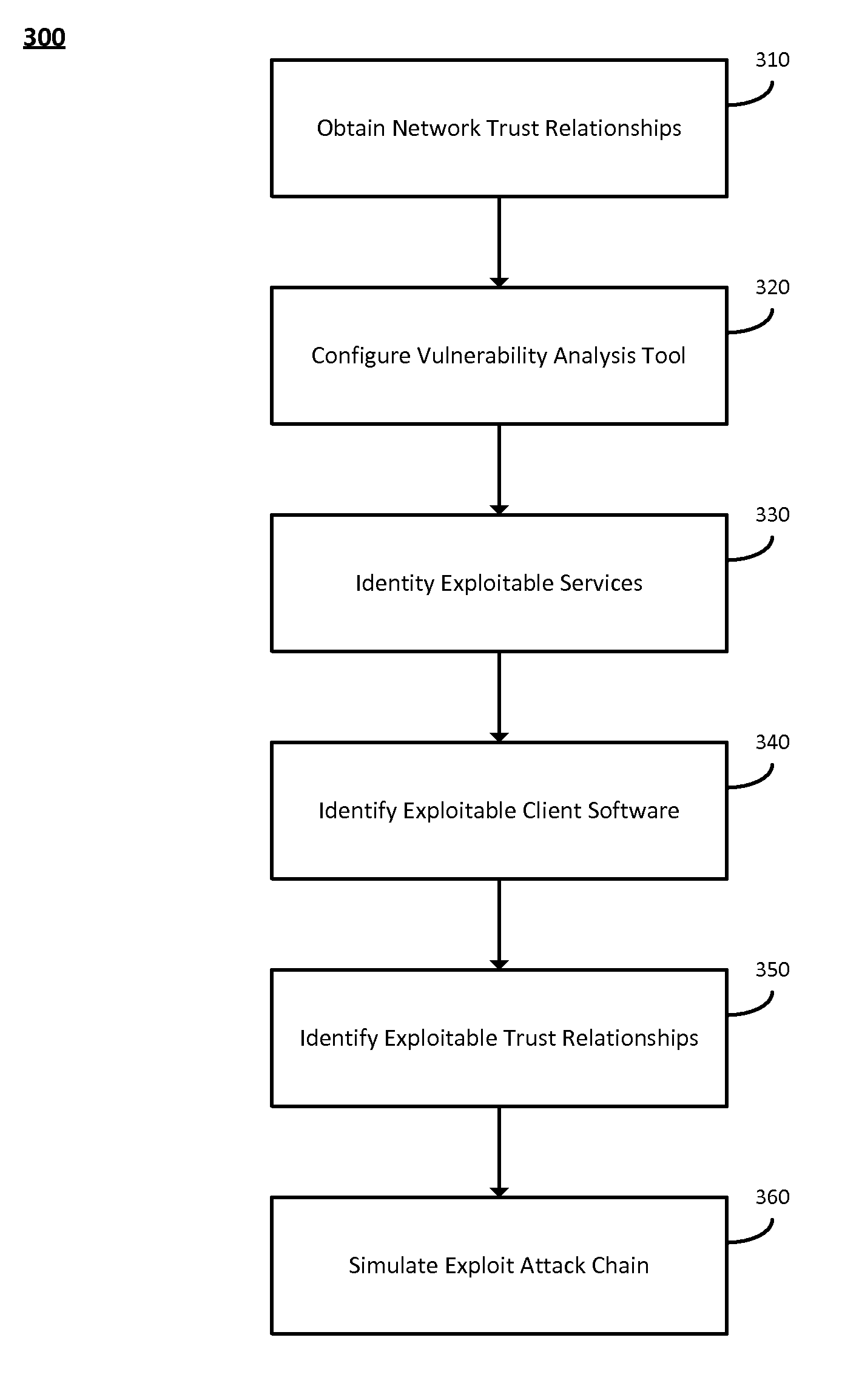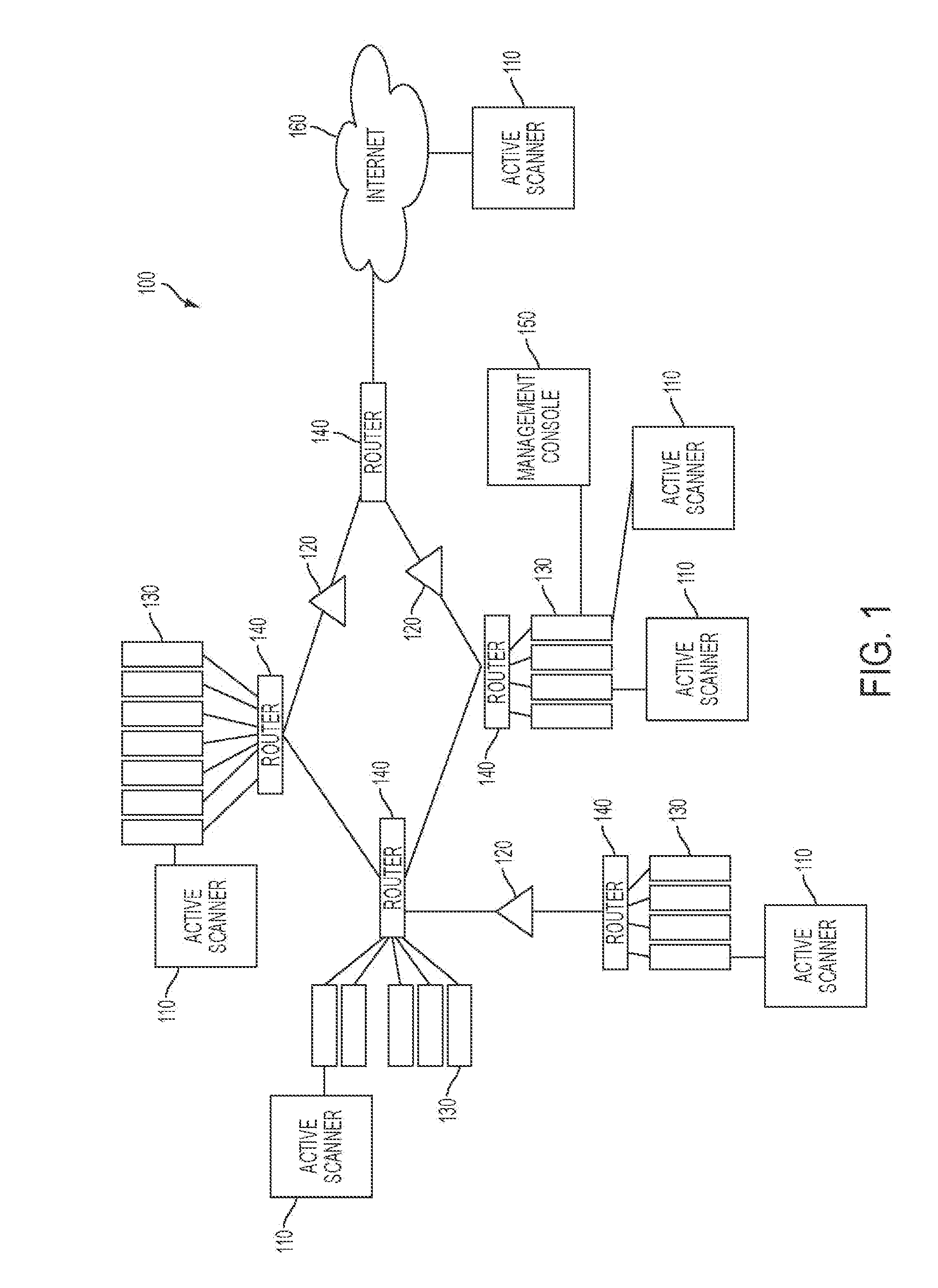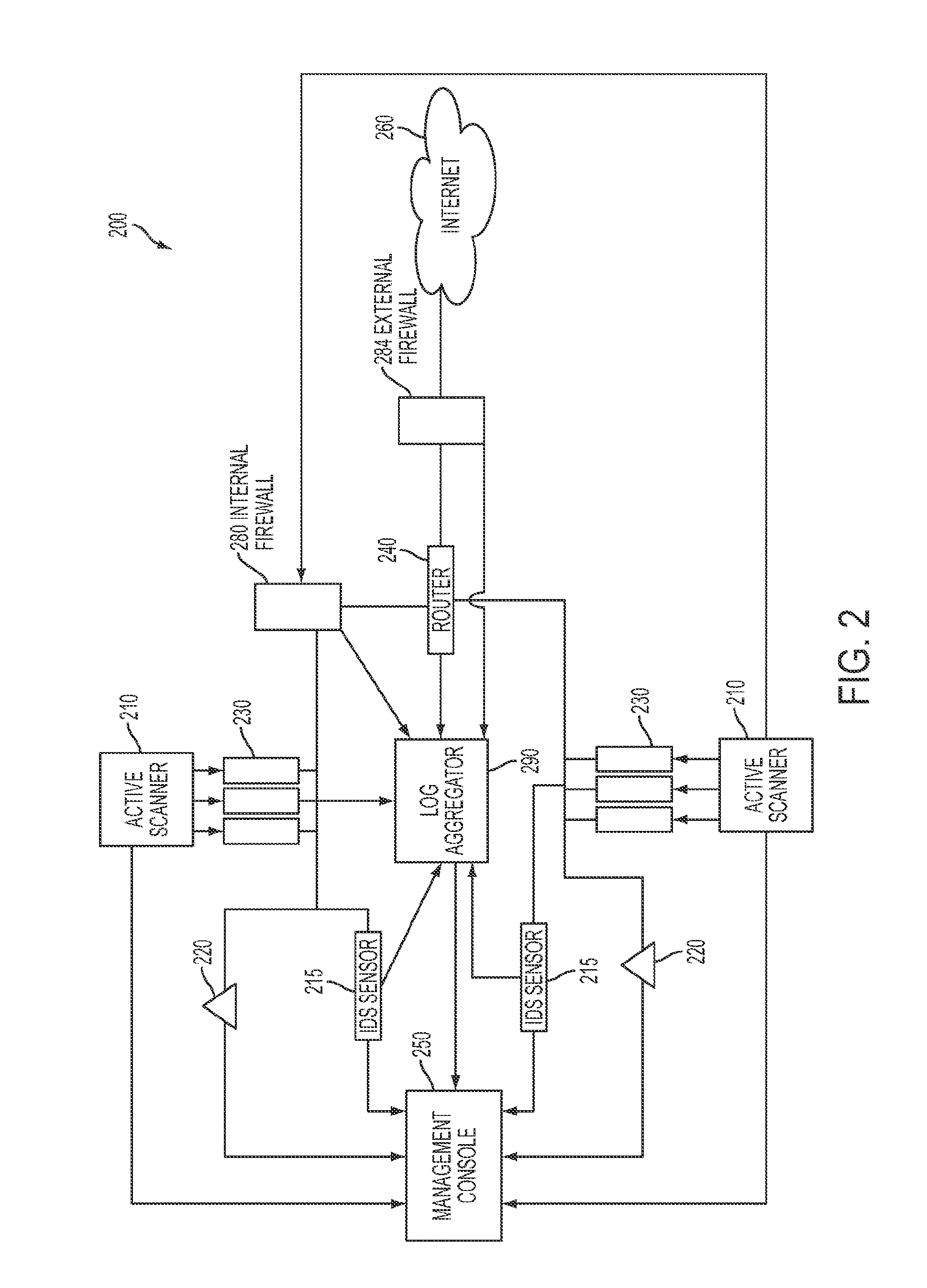In many network environments, illegal or unauthorized users may
exploit vulnerabilities in the network to
gain access, deny access, or otherwise
attack systems in the network.
Accordingly,
physical limitations associated with the network typically limit the effectiveness for active
vulnerability scanners because only devices that can communicate with the active vulnerability scanners can be audited, while actively scanning networks distributed over large areas or having large numbers of devices may take long amounts of time.
Further, in scenarios where one or more of the routers have firewalls that screen or otherwise filter incoming and outgoing traffic, the active
vulnerability scanner may generate incomplete results because the firewalls may prevent the active
vulnerability scanner from auditing hosts or other devices behind the firewalls.
Furthermore, active vulnerability scanners typically create audit results that become stale over time because the audit results describe a static state for the network at a particular point in time.
Thus, an active
vulnerability scanner would likely fail to detect that hosts have been added or removed from the network following a particular active scan, whereby the audit results that active vulnerability scanners create tend to steadily decrease in value over time as changes to the network occur.
Furthermore, active vulnerability scanners can have the tendency to cause network disruptions during an audit.
For example, probing network hosts or other devices during an audit performed by an active vulnerability
scanner may result in communication bottlenecks,
processing overhead, and
instability, among other potential problems in the network.
Thus, deployment locations, configurations, and other factors employed to manage networks can often interfere with obtaining suitable network auditing results using only active vulnerability scanners.
As such, existing systems that tend to rely entirely on active vulnerability scanners typically prevent the active vulnerability
scanner from obtaining comprehensive information that describes important settings, configurations, or other information associated with the network.
In particular, malicious or unauthorized users often employ various techniques to obscure network sessions during an attempted breach, but active vulnerability scanners often cannot detect real-time
network activity that may provide indications that the attempted breach is occurring.
For example, many
backdoor and
rootkit applications tend to use non-standard ports and custom protocols to obscure network sessions, whereby intruders may compromise the network while escaping detection.
Accordingly, although active vulnerability scanners typically employed in existing
network security systems can obtain certain information describing the network, existing systems cannot perform comprehensive security audits to completely describe potential vulnerabilities in the network, build models or topologies for the network, or derive other information that may be relevant to managing the network.
Furthermore, in many instances, certain hosts or devices may participate in sessions occurring on the network, yet the limitations described above can prevent active vulnerability scanners alone from suitably auditing the hosts or devices.
However, even when employing passive vulnerability scanners in combination with active vulnerability scanners, the amount of data returned by the active vulnerability scanners and the passive vulnerability scanners can often be quite substantial, which can lead to difficulties in administrating the potentially large number of vulnerabilities and assets in the network.
For example, many network topologies may include hundreds, thousands, or even larger numbers of nodes, whereby suitably representing the network topologies in a manner that provides
visibility into the network can be unwieldy.
More particularly, in an ideal world all vulnerabilities identified in a network would be patched in real-time, but most organizations tend to have
limited resources and must rely on scheduled patch deployment, which may lead to difficulties in identifying high-
value network clients that are subject to network attacks and servers (potentially already fully patched) that are managed with high-risk clients.
However, traditional network modeling solutions tend to suffer from various drawbacks that limit abilities to
model network configurations and vulnerabilities.
For example, a Windows 2008
system may be fully patched but administered from a desktop that surfs
the Internet and that has an unpatched
web browser or other exploitable
client software, which may raise network vulnerabilities that could escape detection under the techniques employed with existing
network security systems.
In another example, configurations associated with firewalls, routers, switches, and other
traffic management systems may be unavailable or outdated in certain cases, in which case any vulnerability modeling may fail to reflect a current
network configuration state.
Moreover, many networks have flat configurations in which every system can access every other system from inside a firewall, which raises substantially different issues from a
flat network in which only a small subset of systems (e.g., administrators) can
access key servers.
Further still, current exploit and vulnerability modeling systems tends to be
server-centric and therefore only model
server exploits and vulnerabilities rather than combinations of client-side and server-side exploits and vulnerabilities.
 Login to View More
Login to View More  Login to View More
Login to View More 


